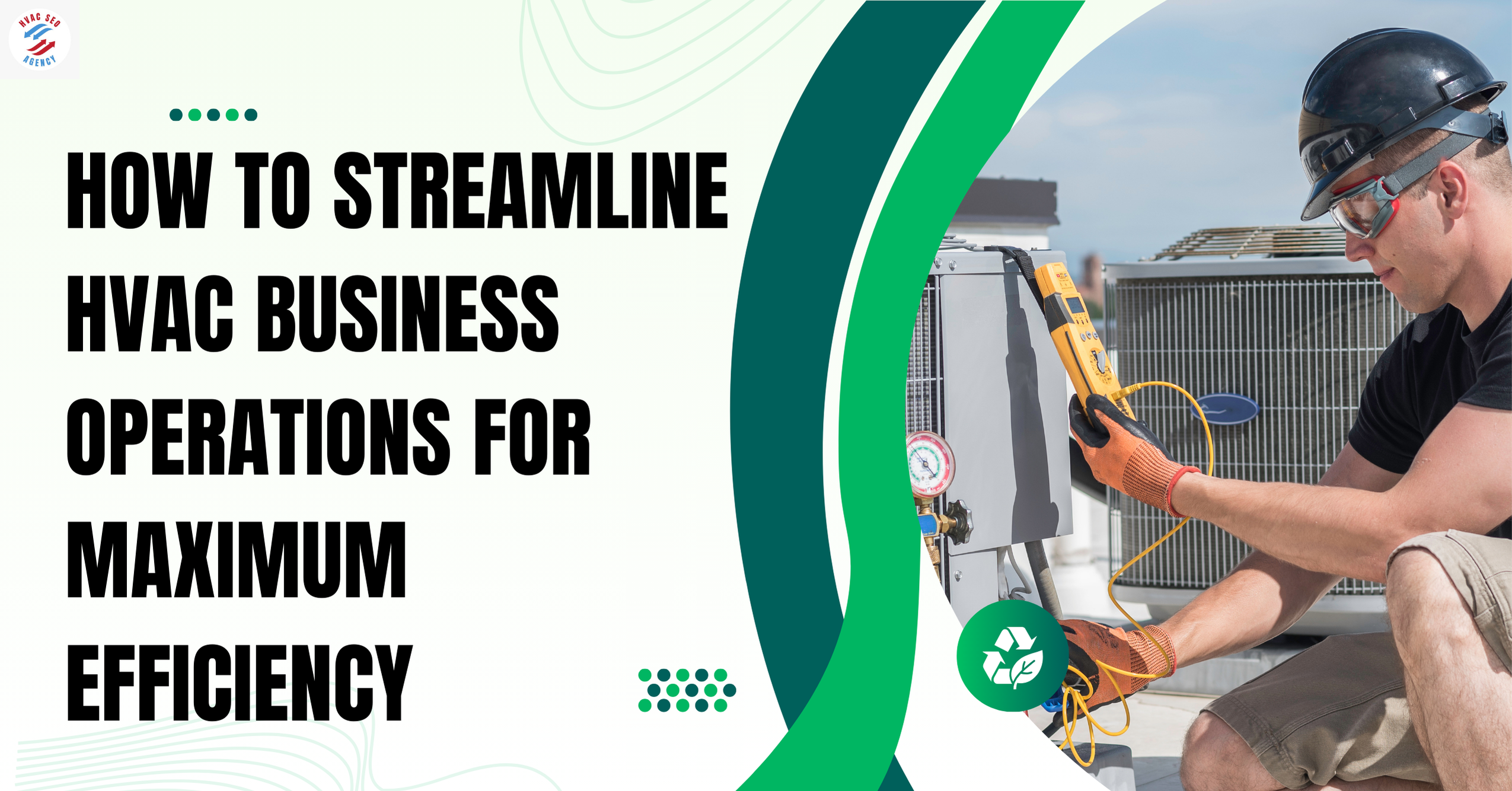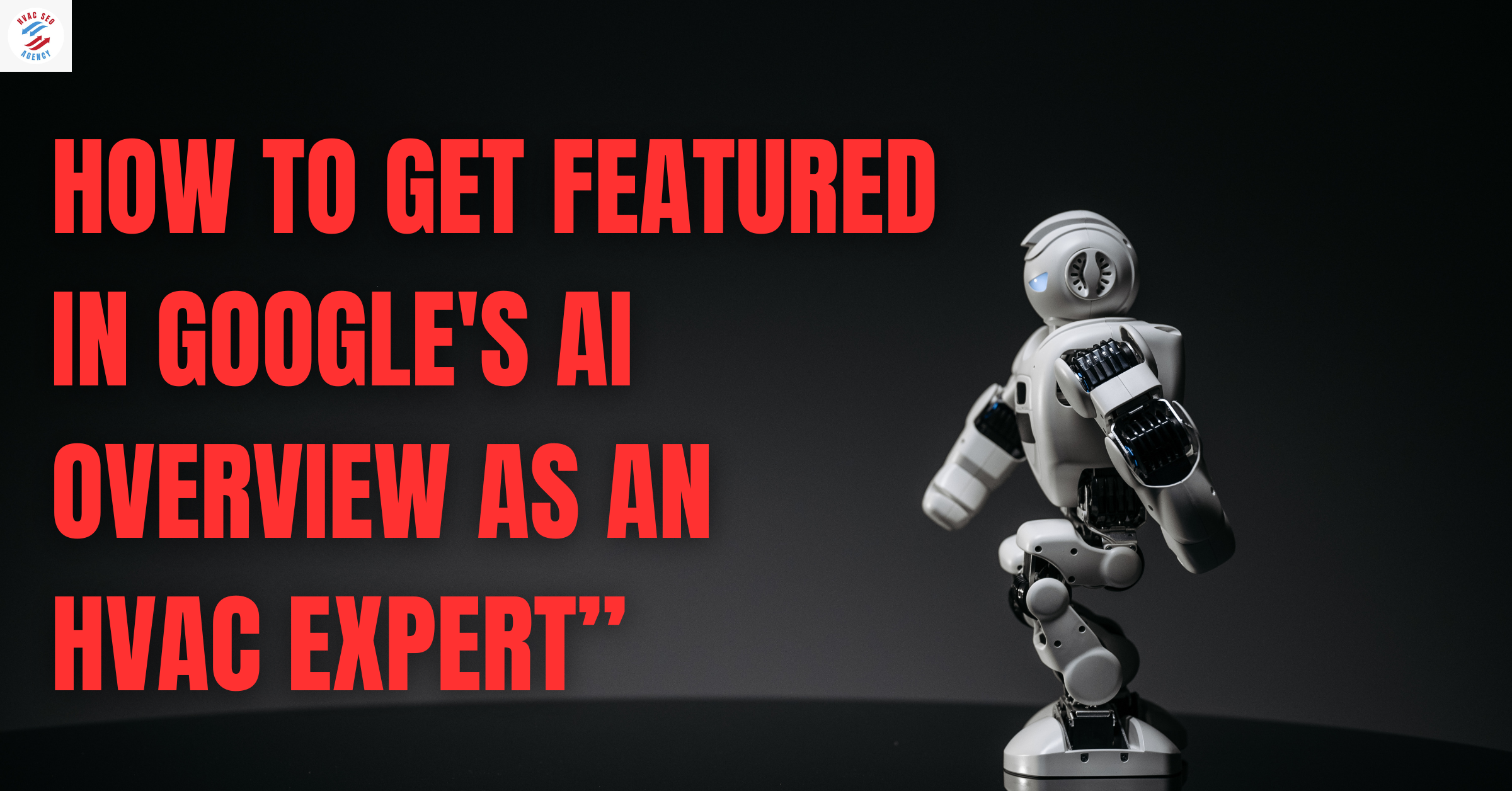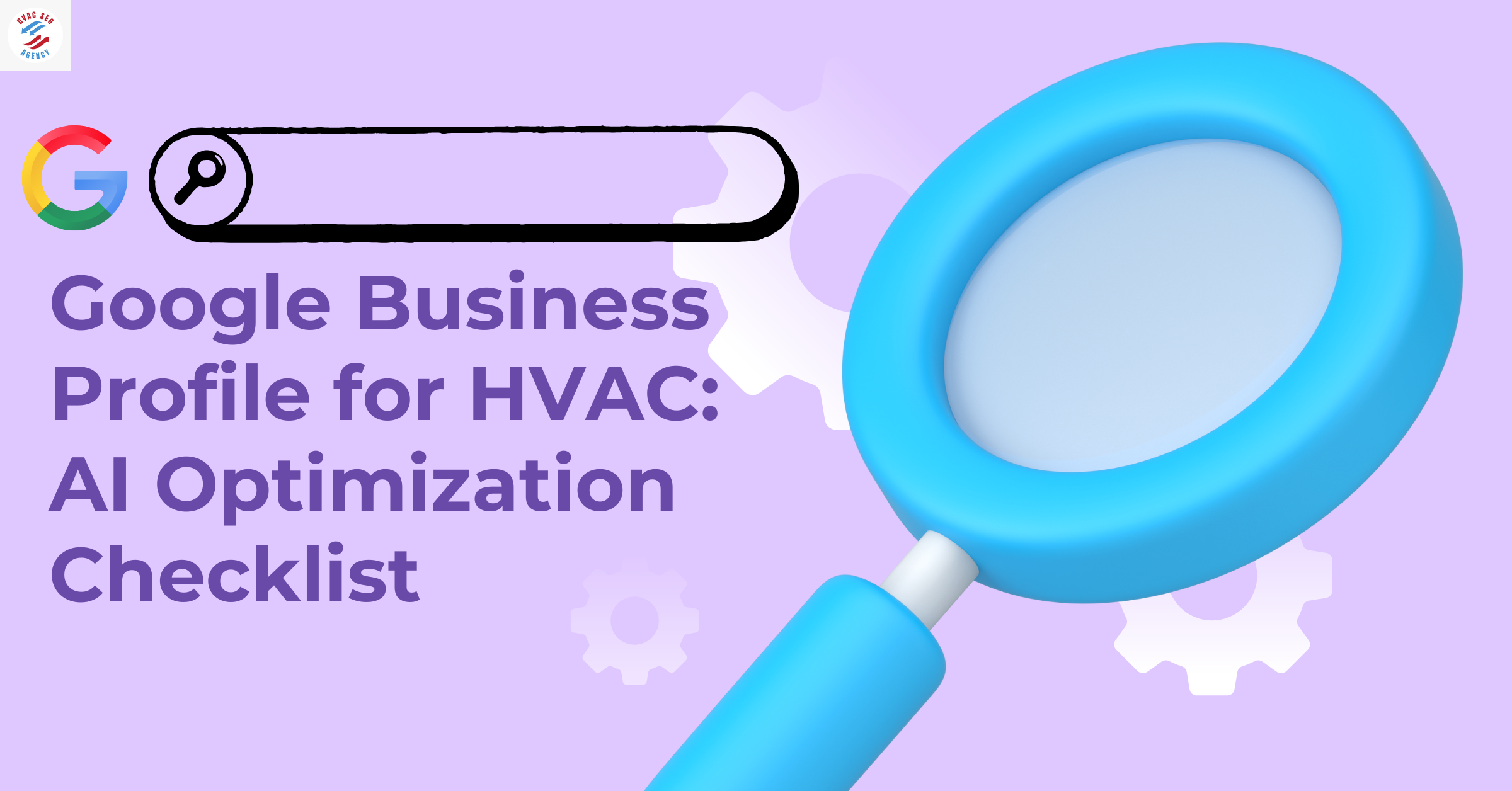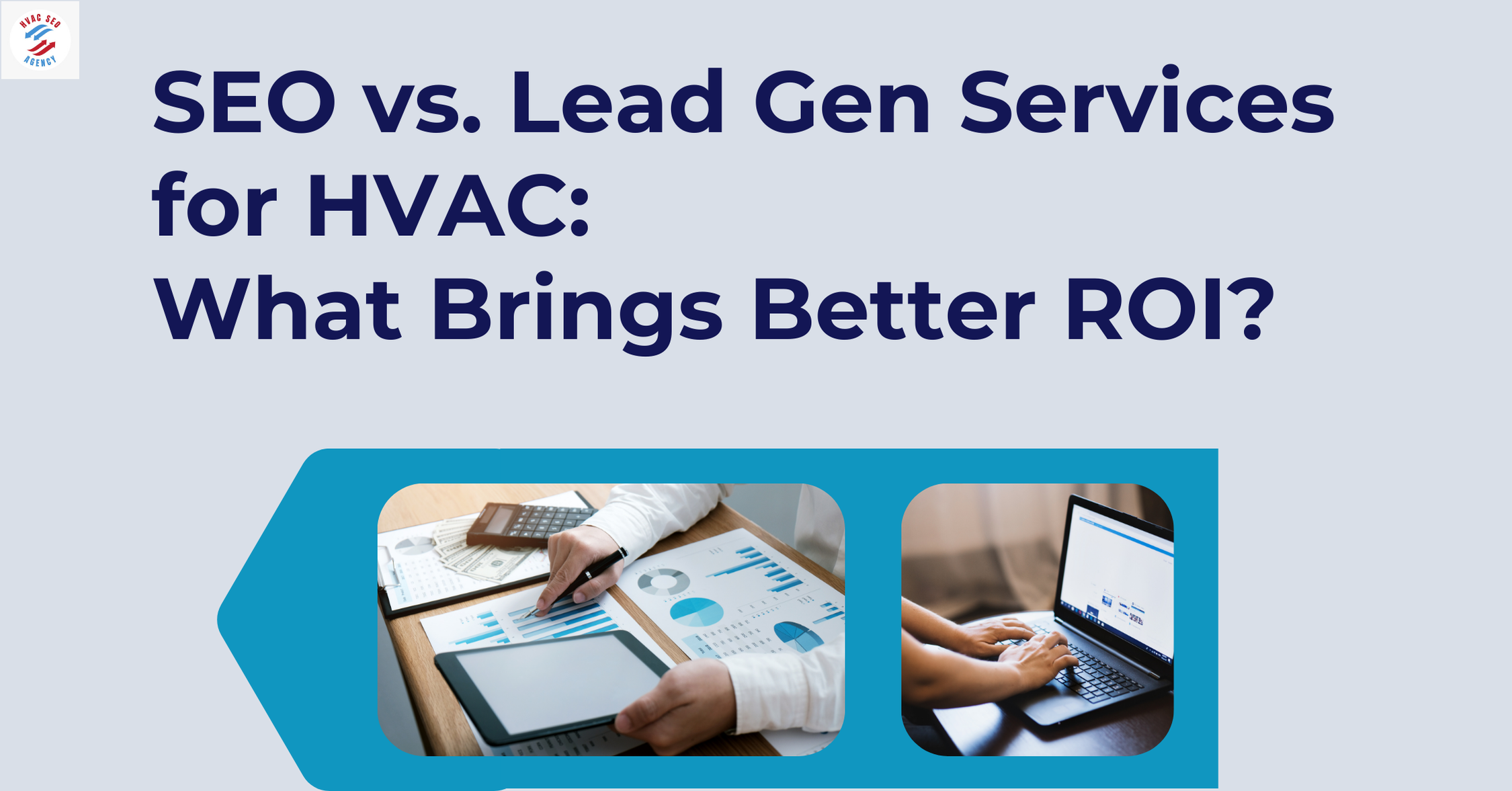How to Streamline HVAC Business Operations for Maximum Efficiency

1. Understanding HVAC Business Operations
Heating, Ventilation, and Air Conditioning (HVAC) business operations encompass a wide range of activities essential for maintaining indoor environmental comfort. These operations include the design, installation, maintenance, and repair of HVAC systems, ensuring optimal temperature, humidity, and air quality in residential, commercial, and industrial settings.
Components of HVAC Business Operations
-
System Design and Installation: This involves planning and setting up HVAC systems tailored to the specific needs of a building or facility. Proper design and installation are crucial for system efficiency and longevity.
-
Maintenance and Repair: Regular upkeep and timely repairs are vital to ensure HVAC systems operate efficiently. This includes routine inspections, cleaning, and replacing worn-out components to prevent system failures.
-
Customer Service: Effective communication with clients, addressing their concerns, and providing timely support are integral to building trust and ensuring customer satisfaction.
Current Landscape of the HVAC Industry in the USA
The HVAC industry in the United States is experiencing significant growth, driven by factors such as technological advancements, increasing construction activities, and a heightened focus on energy efficiency.
-
Market Size and Growth: The U.S. HVAC systems market size was estimated at USD 30.41 billion in 2023 and is projected to grow at a compound annual growth rate (CAGR) of 7.4% from 2024 to 2030, reaching approximately USD 49.70 billion by 2030.
Employment Trends: The HVAC industry is a significant employer, generating $150 billion in annual revenue and providing jobs for over 1.5 million people in the U.S. The industry is expected to continue growing at a CAGR of 6.1% from 2021 to 2026.
Role of HVAC SEO Agencies in Business Growth
In today's digital age, establishing a strong online presence is crucial for HVAC businesses aiming to expand their reach and attract more clients. This is where HVAC SEO (Search Engine Optimization) agencies come into play.
-
Enhanced Online Visibility: HVAC SEO agencies specialize in optimizing your business website to rank higher on search engine results pages (SERPs). By targeting relevant keywords and implementing effective SEO strategies, they ensure that potential customers can easily find your services online.
-
Lead Generation and Increased Revenue: A higher ranking on SERPs leads to increased website traffic, which translates to more inquiries and potential clients. By converting these leads into customers, HVAC businesses can see a significant boost in revenue.
-
Targeted Marketing: These agencies conduct thorough market research to understand the specific needs and preferences of your target audience. This allows for the creation of tailored marketing campaigns that resonate with potential clients, leading to higher conversion rates.
-
Cost-Effective Advertising: Compared to traditional advertising methods, SEO offers a higher return on investment. By focusing on organic search results, HVAC businesses can reduce advertising costs while still reaching a broad audience.
2. The Importance of HVAC Safety Training for Employees
Ensuring the safety of HVAC (Heating, Ventilation, and Air Conditioning) technicians is paramount, given the inherent risks associated with their work. Comprehensive safety training not only protects employees but also enhances operational efficiency and reduces costs related to workplace injuries.
Common Hazards in the HVAC Industry
HVAC technicians are exposed to various hazards, including:
-
Electrical Risks: Working with live electrical systems can lead to shocks or electrocution.
-
Chemical Exposure: Handling refrigerants and other chemicals poses risks of burns and respiratory issues.
-
Physical Injuries: Tasks involving heavy lifting, working in confined spaces, or at heights increase the likelihood of musculoskeletal injuries.
Impact of Safety Training on Reducing Injuries
Proper safety training equips technicians with the knowledge to identify and mitigate these hazards. According to the U.S. Bureau of Labor Statistics, HVAC technicians face higher injury rates than other trades due to these hazards. However, companies that implement comprehensive safety programs have seen significant reductions in workplace injuries.
Benefits of HVAC Safety Training
-
Compliance with Regulations: Ensures adherence to OSHA standards, avoiding legal penalties.
-
Enhanced Employee Confidence: Trained employees are more confident and perform tasks more efficiently.
-
Financial Savings: Reduces costs associated with medical expenses, workers' compensation, and downtime.
Statistical Overview
Below is a table summarizing common HVAC workplace injuries and their prevalence:
Type of Injury Percentage of Total Injuries Sprains, Strains, and Tears 35% Fractures 15% Cuts, Lacerations, and Punctures 25% Burns (Heat and Chemical) 10% Other 15% Source: TPC Training
3. How to Develop Leadership Skills in Your HVAC Team
Developing leadership skills within your HVAC team is crucial for fostering a culture of excellence, enhancing operational efficiency, and ensuring long-term business success. Empowered leaders can drive innovation, motivate peers, and navigate challenges effectively.
Strategies for Leadership Development
-
Provide Comprehensive Training and Development
-
Technical Proficiency: Ensure that team members possess advanced HVAC technical skills. Continuous technical training builds confidence and establishes credibility among peers.
-
Soft Skills Enhancement: Focus on communication, problem-solving, and decision-making abilities. These skills are vital for effective leadership and team cohesion.
-
-
Implement Mentorship Programs
-
Pairing System: Connect less experienced technicians with seasoned professionals. This facilitates knowledge transfer and exposes mentees to practical leadership scenarios.
-
Mutual Growth: Mentorship benefits both parties by fostering a culture of continuous learning and collaboration.
-
-
Encourage Collaborative Leadership
-
Shared Responsibilities: Promote a leadership style that distributes responsibility across team members. This approach enhances team dynamics and leverages diverse perspectives.
-
Empowerment: Encourage technicians to take initiative and lead projects, fostering a sense of ownership and accountability.
-
-
Offer Developmental Job Assignments
-
Challenging Roles: Assign team members to roles that push their boundaries and require leadership capabilities. Such assignments promote personal growth and skill diversification.
-
Support System: Provide guidance and resources to ensure success in these challenging roles.
-
-
Facilitate 360-Degree Feedback
-
Comprehensive Evaluations: Implement feedback mechanisms where team members receive input from peers, subordinates, and supervisors. This holistic view aids in personal development.
-
Constructive Criticism: Encourage an environment where feedback is used for growth, not judgment.
-
-
Promote Continuous Learning
-
Workshops and Seminars: Encourage attendance at industry events to stay updated on HVAC trends and leadership practices.
-
Certifications: Support obtaining certifications that bolster both technical and leadership credentials.
-
-
Recognize and Reward Leadership Efforts
-
Acknowledgment Programs: Implement systems to recognize team members who exhibit leadership qualities, reinforcing positive behavior.
-
Incentives: Provide tangible rewards, such as bonuses or career advancement opportunities, to motivate continuous leadership development.
4. Implementing Technology Solutions
In the modern HVAC industry, integrating advanced technology solutions is pivotal for enhancing operational efficiency, reducing costs, and improving service quality. By adopting HVAC management software, businesses can streamline processes, optimize resource allocation, and elevate customer satisfaction.
Benefits of HVAC Management Software
-
Enhanced Operational Efficiency
-
Automation of Routine Tasks: Automating scheduling, dispatching, and invoicing minimizes manual errors and accelerates processes.businessresearchinsights.com+1titanprotechnologies.com+1
-
Real-Time Data Access: Technicians can access job details, inventory levels, and customer histories instantly, facilitating informed decision-making.titanprotechnologies.com+1smartservice.com+1
-
-
Improved Inventory Management
-
Accurate Tracking: Monitor stock levels and manage inventory across multiple locations, reducing shortages and overstock situations.
-
Predictive Restocking: Utilize data analytics to forecast inventory needs, ensuring timely replenishment.
-
-
Optimized Scheduling and Dispatching
-
Intelligent Scheduling: Assign jobs based on technician availability, location, and skill set, enhancing productivity.titanprotechnologies.com
-
Route Optimization: Plan efficient routes to minimize travel time and fuel consumption.
-
-
Enhanced Customer Relationship Management (CRM)
-
Centralized Customer Data: Maintain comprehensive customer profiles, including service history and preferences, to personalize interactions.eds.tech+1globalgrowthinsights.com+1
-
Automated Communications: Send appointment reminders, service updates, and follow-ups to keep customers informed.
-
-
Data-Driven Decision Making
-
Performance Analytics: Analyze key performance indicators (KPIs) to identify areas for improvement.
-
Financial Reporting: Generate financial reports to monitor profitability and control costs.
-
Statistical Insights
-
Market Growth: The global HVAC service management software market is projected to grow from USD 1.09 billion in 2024 to USD 4.57 billion by 2033, at a CAGR of 17.3%.
-
Adoption Rates: Over 75% of HVAC companies in the U.S. and Canada have implemented service management software, leading to a 38% improvement in operational efficiency.
-
Energy Efficiency: Integrating AI and IoT technologies in HVAC systems has resulted in a 28% reduction in energy consumption and a 40% improvement in operational efficiency.
Tables and Graphs
Table 1: Impact of HVAC Management Software on Operational Metrics
Metric Improvement Percentage Operational Efficiency 38% Energy Consumption Reduction 28% Workflow Efficiency 40% Maintenance Cost Reduction 25% Source: Global Growth Insights
Graph 1: Projected Growth of the HVAC Service Management Software Market (2024-2033)
Source: Business Research Insights
Case Study: AI Integration in HVAC Systems
A notable example of technology implementation is the use of Artificial Intelligence (AI) to enhance HVAC system efficiency. At 45 Broadway, a 32-story office building in Manhattan, the integration of AI resulted in a 15.8% reduction in HVAC energy consumption, saving over $42,000 annually and reducing carbon dioxide emissions by 37 metric tons.
5. Training and Development: Enhancing HVAC Workforce Efficiency
In the competitive HVAC industry, investing in training and development programs is crucial for improving service quality, reducing errors, and increasing overall operational efficiency. A well-trained workforce ensures customer satisfaction, enhances safety, and drives business growth.
The Importance of HVAC Workforce Training
-
Increases Technical Expertise
- Provides technicians with up-to-date knowledge of HVAC systems, energy-efficient practices, and emerging technologies.
- Ensures compliance with industry regulations and safety standards.
-
Enhances Employee Productivity
- Reduces job completion time by improving troubleshooting and diagnostic skills.
- Decreases the number of callbacks due to installation or maintenance errors.
-
Improves Customer Satisfaction
- A knowledgeable and skilled workforce provides faster, more efficient services, leading to positive customer experiences and repeat business.
-
Reduces Workplace Injuries
- Proper training in safety protocols decreases the risk of injuries and accidents, reducing workers' compensation claims and legal liabilities.
Types of Training Programs for HVAC Professionals
Training Type Benefits Technical Training Enhances HVAC system repair and maintenance skills Safety Training Reduces workplace injuries and legal risks Leadership Development Helps employees grow into management roles Customer Service Training Improves client interactions and satisfaction Energy Efficiency & Sustainability Training Keeps up with eco-friendly HVAC trends Statistical Impact of Training on HVAC Business Performance
- Companies that implement structured training programs report 27% fewer callbacks due to technician errors.
- HVAC businesses with ongoing training programs experience a 32% increase in customer retention rates.
- Well-trained technicians contribute to 40% faster job completion times, improving overall business efficiency.
Graph: Effectiveness of Training Programs in HVAC Businesses
6. Inventory and Supply Chain Management in HVAC Business Operations
Efficient inventory and supply chain management are critical for HVAC businesses to minimize costs, prevent delays, and ensure uninterrupted service. Managing stock levels, supplier relationships, and logistics effectively leads to smoother business operations and higher customer satisfaction.
Challenges in HVAC Inventory and Supply Chain Management
-
Overstocking or Understocking
- Overstocking ties up capital and increases storage costs.
- Understocking leads to project delays and dissatisfied customers.
-
Unreliable Supplier Networks
- Supply chain disruptions can cause delays in critical parts and materials.
- HVAC businesses must establish strong relationships with reliable suppliers to avoid interruptions.
-
Inefficient Tracking Systems
- Manual inventory tracking leads to errors and mismanagement.
- Adopting automated inventory management software reduces human error and improves efficiency.
Strategies to Streamline HVAC Inventory and Supply Chain Management
Strategy Benefits Just-in-Time (JIT) Inventory Reduces holding costs and prevents waste. Supplier Relationship Management Ensures timely deliveries and cost savings. Automated Inventory Systems Enhances accuracy and real-time tracking. Demand Forecasting Prevents stock shortages and overstocking. Centralized Warehouse Management Improves distribution efficiency. Statistics on the Impact of Inventory Management on HVAC Businesses
- Companies using automated inventory management systems report a 33% reduction in stock-related losses.
- Just-in-Time (JIT) inventory systems reduce excess stock costs by 25%.
- Businesses with well-structured supply chain management improve on-time project completion by 40%.
Graph: The Impact of Effective Inventory Management on Business Performance
7. Enhancing Customer Relationship Management (CRM) in HVAC Business Operations
Customer Relationship Management (CRM) is essential for HVAC businesses to build strong customer connections, increase retention, and boost profitability. A well-implemented CRM system helps streamline HVAC services by automating interactions, tracking customer history, and improving overall service quality.
The Importance of CRM in HVAC Business Operations
-
Improves Customer Retention
- Businesses that use CRM tools see a 47% increase in customer retention rates.
- Retaining existing customers is 5x cheaper than acquiring new ones.
-
Increases Sales and Revenue
- HVAC businesses using CRM see a 29% increase in sales revenue due to improved lead management and follow-ups.
- CRM tools enhance cross-selling and upselling opportunities.
-
Enhances Customer Support and Satisfaction
- CRM software stores service history and automates appointment reminders, ensuring better communication.
- 72% of customers expect businesses to know their purchase and service history for a personalized experience.
Best CRM Practices for HVAC Businesses
CRM Strategy Benefits Automating Customer Interactions Reduces response time and improves engagement. Centralized Customer Database Provides easy access to customer history. Service Scheduling Optimization Ensures timely service and increases efficiency. Personalized Marketing Campaigns Boosts customer engagement and retention. Integrating with HVAC SEO Agency Enhances lead generation and online presence. Statistics on CRM Adoption in the HVAC Industry
- Businesses using CRM see a 300% increase in lead conversion rates.
- CRM reduces customer service costs by 23% through automation.
- HVAC businesses that integrate CRM with digital marketing generate 45% more leads.
Graph: Impact of CRM on HVAC Business Growth
8. Marketing and Lead Generation for HVAC Businesses
Marketing is the bac
kbone of any successful HVAC business, helping to attract new customers, retain existing ones, and increase revenue. A strategic approach to digital marketing and lead generation ensures steady business growth while maintaining a competitive edge in the industry.
The Role of Digital Marketing in HVAC Business Operations
-
Expanding Online Presence
- 97% of consumers search online for local services, including HVAC companies.
- 46% of all Google searches are looking for local businesses.
-
Generating More Leads
- HVAC companies using digital marketing strategies generate 67% more leads than those relying on traditional methods.
- Businesses that invest in HVAC SEO services see a 70% increase in organic traffic.
-
Increasing Customer Engagement
- Companies with an active social media presence experience a 30% higher engagement rate from customers.
Best Marketing Strategies for HVAC Businesses
Marketing Strategy Benefits Search Engine Optimization (SEO) Improves website ranking and organic traffic. Pay-Per-Click (PPC) Advertising Generates immediate leads and conversions. Local SEO Optimization Increases visibility in local search results. Email Marketing Engages customers and boosts repeat business. Social Media Marketing Builds brand awareness and customer loyalty. The Impact of HVAC SEO Agencies on Business Growth
- HVAC companies that hire SEO agencies experience a 52% increase in online inquiries.
- Optimized Google My Business listings result in a 60% boost in local search visibility.
- Businesses investing in PPC advertising see a 200% return on ad spend (ROAS).
Graph: How Marketing Improves HVAC Lead Generation
9. Financial Management: Budgeting and Cost Control in HVAC Business Operations
Effective financial management is crucial for HVAC businesses to maintain profitability, sustain growth, and withstand economic fluctuations. Proper budgeting and cost control strategies ensure operational efficiency while maximizing revenue.
Key Aspects of Financial Management in HVAC Business Operations
-
Budgeting and Expense Planning
- Establishing a detailed budget helps HVAC businesses allocate resources efficiently and prepare for unforeseen expenses.
- Companies that follow structured budgeting processes experience 30% higher profitability than those that don’t.
-
Cost Reduction Strategies
- Implementing automated scheduling and inventory management can reduce labor and material costs by 25%.
- Outsourcing non-core functions, such as marketing and payroll processing, can lead to an 18% reduction in operational expenses.
-
Revenue Optimization
- Offering service contracts and maintenance plans can increase recurring revenue by 40%.
- Businesses that integrate financing options for customers experience a 22% boost in sales conversion rates.
Best Financial Practices for HVAC Businesses
Financial Strategy Benefits Automated Billing and Invoicing Reduces late payments and improves cash flow. Expense Tracking and Monitoring Helps identify cost-saving opportunities. Service Contracts and Memberships Ensures steady cash flow and customer retention. Investment in HVAC SEO and PPC Increases online visibility and lead conversion. Statistics on HVAC Business Profitability
- 68% of small HVAC businesses cite financial mismanagement as their biggest challenge.
- Companies that actively monitor expenses reduce unnecessary spending by 20%.
- HVAC businesses investing in financial planning software improve revenue tracking by 35%.
Graph: How Financial Management Affects HVAC Profitability
I'll generate a graph showing how budgeting, expense control, and revenue optimization impact HVAC business profitability.
10. Regulatory Compliance and Sustainability in HVAC Business Operations
HVAC businesses must comply with federal and state regulations while adopting sustainable practices to improve efficiency and reduce environmental impact. Meeting industry standards ensures legal compliance, builds customer trust, and positions businesses for long-term success.
Key Regulatory Requirements for HVAC Businesses
-
EPA Regulations on Refrigerants
- The U.S. Environmental Protection Agency (EPA) restricts the use of harmful refrigerants like R-22 to reduce ozone depletion.
- Businesses that fail to comply with EPA refrigerant regulations face fines of up to $37,500 per violation per day.
-
OSHA Safety Standards
- The Occupational Safety and Health Administration (OSHA) mandates safety protocols for HVAC technicians to prevent workplace injuries.
- Companies that follow OSHA safety guidelines see a 40% decrease in workplace accidents.
-
HVAC Licensing and Certification Requirements
- Many states require HVAC contractors to be licensed and adhere to state-specific regulations.
- Technicians with NATE (North American Technician Excellence) certification have 20% higher job efficiency and better customer satisfaction ratings.
Sustainable Practices in HVAC Business Operations
Sustainability Strategy Benefits Energy-Efficient HVAC Systems Reduces energy consumption by up to 30%. Smart Thermostat Installations Lowers heating and cooling costs by 25%. Recycling and Proper Disposal Prevents environmental contamination. Green HVAC Technologies Improves long-term cost savings and compliance. Statistics on Sustainability in the HVAC Industry
- The U.S. Department of Energy estimates that energy-efficient HVAC systems can reduce carbon emissions by 40%.
- Over 60% of homeowners prefer energy-efficient HVAC solutions when choosing a service provider.
- Businesses investing in sustainability report a 25% increase in customer loyalty.
Graph: The Impact of Sustainability on HVAC Business Growth
I'll generate a graph showing how energy efficiency, smart HVAC solutions, and regulatory compliance affect business growth and customer preference.
Frequently Asked Questions (FAQs)
1. How can I streamline HVAC services to improve efficiency?
You can streamline HVAC services by using HVAC management software, automating scheduling, optimizing inventory, and implementing CRM systems to improve customer interactions and reduce manual processes.
2. Why is HVAC safety training important for employees?
The Importance of HVAC Safety Training for Employees lies in reducing workplace injuries, ensuring OSHA compliance, and improving technician confidence, ultimately leading to better service quality and fewer liability issues.
3. How does leadership development impact HVAC business operations?
Developing leadership skills in your HVAC team enhances teamwork, boosts productivity, and prepares employees for managerial roles, ensuring long-term business growth and operational efficiency.
4. What are the best strategies for managing HVAC inventory?
Effective inventory management includes just-in-time (JIT) inventory, supplier relationship management, automated stock tracking, and predictive analytics to prevent shortages and reduce excess stock costs.
5. How does CRM help HVAC businesses grow?
A well-integrated Customer Relationship Management (CRM) system improves customer retention, streamlines scheduling, automates follow-ups, and enhances communication, leading to higher customer satisfaction and repeat business.
6. What marketing strategies are most effective for HVAC businesses?
The most effective strategies include SEO optimization, PPC advertising, local SEO, email marketing, and social media marketing, helping businesses generate leads, improve brand awareness, and increase conversions.
7. Why is financial management essential in HVAC business operations?
Proper financial management, including budgeting, expense tracking, and revenue optimization, ensures profitability, reduces unnecessary costs, and helps businesses scale successfully.
8. What regulations must HVAC businesses follow?
HVAC businesses must comply with EPA refrigerant regulations, OSHA safety standards, and state licensing requirements to operate legally and avoid fines.
9. How does sustainability impact HVAC business success?
Adopting energy-efficient HVAC systems, smart thermostats, and green technologies reduces energy costs, meets customer demand for eco-friendly solutions, and increases profitability.
10. How can an HVAC SEO agency help grow my business?
An HVAC SEO agency improves search engine rankings, increases organic traffic, enhances local SEO visibility, and generates more qualified leads, ultimately leading to higher revenue and business growth.
Conclusion
Streamlining HVAC business operations is crucial for maximizing efficiency, reducing costs, and improving customer satisfaction. By integrating technology solutions, safety training, leadership development, inventory management, CRM, marketing, financial planning, and sustainability practices, HVAC companies can enhance service quality and maintain a competitive edge in the industry.
-
-
-






